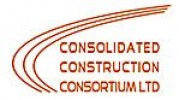Filter interviews by
Consolidated Construction Consortium Interview Questions and Answers
16 Interview questions
Mix designs are the process of determining the proportions of various ingredients to create a concrete mix with desired properties.
Mix designs involve selecting the appropriate materials for the concrete mix
The proportions of each material are determined based on the desired strength, workability, and durability of the concrete
Factors such as water-cement ratio, aggregate size and type, and admixtures are consider...
The compressive strength of M30 grade concrete in day 7 is 22.5 N/mm².
The compressive strength of concrete is measured in N/mm².
M30 grade concrete has a compressive strength of 30 N/mm² at 28 days.
The compressive strength of M30 grade concrete at day 7 is approximately 60% of its 28-day strength.
The compressive strength of M30 grade concrete at day 7 is 22.5 N/mm².
Things to consider while flooring
Type of flooring material
Durability and maintenance
Moisture resistance
Slip resistance
Aesthetics and design
Cost and budget
Installation process
Before starting a new site, certain basic things need to be considered.
Site location and accessibility
Availability of resources like water, electricity, and raw materials
Environmental impact assessment
Legal permits and approvals
Safety measures and emergency plans
Budget and timeline
Project management and team coordination
CBR test is a measure of soil strength and bearing capacity.
CBR stands for California Bearing Ratio.
It is a penetration test that measures the strength of soil and its ability to bear loads.
The test involves compacting soil into a mold and measuring the force required to penetrate it with a plunger.
The ratio of the force required to penetrate the soil to the force required to penetrate a standard material is the C...
Prepare for an IT Manager interview by researching, practicing, and showcasing relevant skills and experiences.
Research the company: Understand its culture, products, and recent news. For example, if the company recently launched a new software, be prepared to discuss it.
Review common IT Manager interview questions: Prepare answers for questions like 'How do you manage a team?' or 'What is your experience with pro...
Water cement ratio affects the strength and durability of concrete by influencing the workability, porosity, and permeability.
Lower water cement ratio leads to higher strength and durability due to reduced porosity and permeability.
Higher water cement ratio can decrease strength and durability as it increases porosity and permeability.
Optimum water cement ratio is crucial for achieving desired concrete properties.
...
Black cotton soil requires deep foundations like pile foundations to prevent swelling issues.
Deep foundations like pile foundations are commonly used in black cotton soil to prevent swelling.
Shallow foundations may not be suitable as they can be affected by the swelling of the soil.
Proper site investigation and soil testing are crucial before deciding on the type of foundation to use.
Examples of suitable foundatio...
The size of bricks and blocks varies, and their compressive strength depends on the materials used.
Bricks can range in size from 2.25 x 3.75 x 7.5 inches to 3.5 x 4.5 x 9 inches
Blocks can range in size from 4 x 8 x 16 inches to 8 x 8 x 16 inches
Compressive strength can range from 1,000 psi to over 10,000 psi depending on materials and manufacturing process
Tests of aggregate in civil engineering are important to ensure quality and durability of roadways.
Aggregate tests include sieve analysis, specific gravity, absorption, and abrasion resistance.
Sieve analysis determines the particle size distribution of the aggregate.
Specific gravity measures the density of the aggregate compared to water.
Absorption measures the amount of water absorbed by the aggregate.
Abrasion re...
Consolidated Construction Consortium Interview Experiences
12 interviews found
(1 Question)
- Q1. TECHNICAL ORIENTATION
Interview Preparation Tips
I applied via Naukri.com and was interviewed before May 2023. There was 1 interview round.
(6 Questions)
- Q1. Excel MS word PowerPoint
- Q2. Data entries MS Word
- Q3. MS word Excel PowerPoint
- Q4. Data entry Excel
- Q5. PowerPoint Ms excel
- Q6. Excel PowerPoint
Interview Preparation Tips
I applied via Approached by Company and was interviewed in Aug 2022. There were 2 interview rounds.

(6 Questions)
- Q1. What is the compressive strength for the grade of M30 in day 7?
- Ans.
The compressive strength of M30 grade concrete in day 7 is 22.5 N/mm².
The compressive strength of concrete is measured in N/mm².
M30 grade concrete has a compressive strength of 30 N/mm² at 28 days.
The compressive strength of M30 grade concrete at day 7 is approximately 60% of its 28-day strength.
The compressive strength of M30 grade concrete at day 7 is 22.5 N/mm².
- Q2. Explain about mix designs
- Ans.
Mix designs are the process of determining the proportions of various ingredients to create a concrete mix with desired properties.
Mix designs involve selecting the appropriate materials for the concrete mix
The proportions of each material are determined based on the desired strength, workability, and durability of the concrete
Factors such as water-cement ratio, aggregate size and type, and admixtures are considered in...
- Q3. What are the basic thinks before new site starts
- Ans.
Before starting a new site, certain basic things need to be considered.
Site location and accessibility
Availability of resources like water, electricity, and raw materials
Environmental impact assessment
Legal permits and approvals
Safety measures and emergency plans
Budget and timeline
Project management and team coordination
- Q4. What is size of bricks,blocks and compressive strength
- Ans.
The size of bricks and blocks varies, and their compressive strength depends on the materials used.
Bricks can range in size from 2.25 x 3.75 x 7.5 inches to 3.5 x 4.5 x 9 inches
Blocks can range in size from 4 x 8 x 16 inches to 8 x 8 x 16 inches
Compressive strength can range from 1,000 psi to over 10,000 psi depending on materials and manufacturing process
- Q5. What are things to consider while flooring
- Ans.
Things to consider while flooring
Type of flooring material
Durability and maintenance
Moisture resistance
Slip resistance
Aesthetics and design
Cost and budget
Installation process
- Q6. Tell about ur previous experiences
- Ans.
I have previous experience working as an assistant engineer in the field of [field].
Worked as an assistant engineer at [Company A] for [duration].
Assisted in designing and implementing [specific projects or tasks].
Collaborated with a team of engineers to troubleshoot and resolve technical issues.
Utilized [specific software or tools] to analyze data and generate reports.
Participated in regular meetings and provided upda...
Interview Preparation Tips
I applied via LinkedIn and was interviewed in Nov 2022. There were 5 interview rounds.

Optional question according to job field
Give a topic and which one dicused by group
(1 Question)
- Q1. It's depend on work , employee in which one field have done
(1 Question)
- Q1. By the HR ask to employee his personal life and his work professional
Interview Preparation Tips

(1 Question)
- Q1. What is your work experience
Interview Preparation Tips
(1 Question)
- Q1. Some basic questions which is related to works
(1 Question)
- Q1. Nat any thing just all basic of working details
Interview Preparation Tips
Interview Questionnaire
4 Questions
- Q1. Types of cement grade
- Ans.
There are different types of cement grades used in construction, each with specific properties and applications.
Ordinary Portland Cement (OPC) is the most commonly used cement grade.
Portland Pozzolana Cement (PPC) contains pozzolanic materials like fly ash, which enhances its strength and durability.
Rapid Hardening Cement (RHC) gains strength quickly and is used in situations where early strength is required.
Low Heat C...
- Q2. Tests of aggregate
- Ans.
Tests of aggregate in civil engineering are important to ensure quality and durability of roadways.
Aggregate tests include sieve analysis, specific gravity, absorption, and abrasion resistance.
Sieve analysis determines the particle size distribution of the aggregate.
Specific gravity measures the density of the aggregate compared to water.
Absorption measures the amount of water absorbed by the aggregate.
Abrasion resista...
- Q3. What is CBR test
- Ans.
CBR test is a measure of soil strength and bearing capacity.
CBR stands for California Bearing Ratio.
It is a penetration test that measures the strength of soil and its ability to bear loads.
The test involves compacting soil into a mold and measuring the force required to penetrate it with a plunger.
The ratio of the force required to penetrate the soil to the force required to penetrate a standard material is the CBR va...
- Q4. Text
I applied via Naukri.com and was interviewed in Nov 2019. There were 3 interview rounds.
Interview Questionnaire
3 Questions
- Q1. Why i don't get job easily?
- Q2. How to prepare interview?
- Ans.
Prepare for an IT Manager interview by researching, practicing, and showcasing relevant skills and experiences.
Research the company: Understand its culture, products, and recent news. For example, if the company recently launched a new software, be prepared to discuss it.
Review common IT Manager interview questions: Prepare answers for questions like 'How do you manage a team?' or 'What is your experience with project ...
- Q3. Give some tips to get the job easily.
Interview Preparation Tips
Interview Preparation Tips
Experience: The aptitute test was an online test multiple choice with negative marking. The question were similar to those asked in GATE. There were purely technical questions, mostly from concrete technology, design of structures (codal provisions) and also from geotechnical subjects. There were no questions from any water resources subjects. From surveying there was one question worth 15 marks (3.75 negative marking). There were also some simple questions based on geometry (area, volume etc.)
Duration: 180 minutes
Round: Technical Interview
Experience: Some basic questions from concrete technology were asked. The interview was very easy compared to the aptitude test. If marks in apti are good, chances of being selected are very high. The interviewer asked me my favourite subject and again asked some very basic questions from it.
Skill Tips: The selection was mainly based on the 90 minute online aptitude test. The cutoff for shortlisting was high and most people were eliminated here itself. The personal interview was easy, lasted about 5 minutes. Even though I answered with an honest "I don't know" to most of the technical questions based on codal provisions, I was selected. So one can infer that getting good marks in the aptitude test and being confident and honest is the key to this job. I found the aptitude test to be very good, the standard was higher than any other company so far. If one knows the IS codal provisions well and is confident in the interview, getting this job is easy enough.
College Name: NIT WARANGAL
Interview Questionnaire
7 Questions
- Q1. Grade of concrete
- Ans.
Grade of concrete refers to the strength of the concrete mix design.
Grade of concrete is denoted by the ratio of cement to sand to aggregate.
Common grades of concrete include M20, M25, and M30.
Higher grade concrete has higher strength and is used for heavy-duty structures.
The grade of concrete is specified in construction drawings or specifications.
- Q2. Water cement ratio and its effect on strength and durability of concrete?
- Ans.
Water cement ratio affects the strength and durability of concrete by influencing the workability, porosity, and permeability.
Lower water cement ratio leads to higher strength and durability due to reduced porosity and permeability.
Higher water cement ratio can decrease strength and durability as it increases porosity and permeability.
Optimum water cement ratio is crucial for achieving desired concrete properties.
Exces...
- Q3. How to prepare M30 concrete at site?
- Q4. Type of foundation?
- Ans.
The type of foundation is a crucial aspect of building construction, providing support and stability to the structure.
Different types of foundations include shallow foundations (such as strip, raft, and pad foundations) and deep foundations (such as pile foundations)
The choice of foundation type depends on factors like soil conditions, building load, and local regulations
Examples of foundation types: strip foundation f...
- Q5. Where we use pile foundation?
- Q6. Which type of foundation we use in black cotton soil and how foundation reacts for swelling?
- Ans.
Black cotton soil requires deep foundations like pile foundations to prevent swelling issues.
Deep foundations like pile foundations are commonly used in black cotton soil to prevent swelling.
Shallow foundations may not be suitable as they can be affected by the swelling of the soil.
Proper site investigation and soil testing are crucial before deciding on the type of foundation to use.
Examples of suitable foundations fo...
- Q7. Tell me about yourself.
Interview Preparation Tips
Experience: Question asked were covering all the subjects equally from BTech civil.
Duration: 90 minutes
Round: HR Interview
Experience: The questions from aptitude and interview were good. They are testing us in all sense .My experience was really great.
Skill Tips: Be prepared for all subjects from your BTech and don’t neglect your PG subjects. BEST OF LUCK FOR YOUR FUTURE .
College Name: NIT WARANGAL
Top trending discussions






Consolidated Construction Consortium Interview FAQs
Some of the top questions asked at the Consolidated Construction Consortium interview -
Tell us how to improve this page.
Consolidated Construction Consortium Interviews By Designations
- Consolidated Construction Consortium Assistant Engineer Interview Questions
- Consolidated Construction Consortium Senior Manager Project Management Interview Questions
- Consolidated Construction Consortium Commie 2 Interview Questions
- Consolidated Construction Consortium Site Engineer Interview Questions
- Consolidated Construction Consortium Piping Foreman Interview Questions
- Consolidated Construction Consortium IT Manager Interview Questions
- Consolidated Construction Consortium Site Superintendent Interview Questions
- Consolidated Construction Consortium Civil Engineer-Highway/Roadway Interview Questions
- Show more
Interview Questions for Popular Designations
Overall Interview Experience Rating
based on 4 interview experiences
Difficulty level
Duration
Interview Questions from Similar Companies
Consolidated Construction Consortium Reviews and Ratings
based on 284 reviews
Rating in categories
|
Civil Site Engineer
39
salaries
| ₹2 L/yr - ₹5.2 L/yr |
|
Assistant Engineer
33
salaries
| ₹2.4 L/yr - ₹4.8 L/yr |
|
Site Engineer
23
salaries
| ₹2.2 L/yr - ₹5 L/yr |
|
Assistant Engineer - Civil
17
salaries
| ₹2.5 L/yr - ₹4.3 L/yr |
|
Project Manager
14
salaries
| ₹6.5 L/yr - ₹18 L/yr |

L&T Construction

Simplex Infrastructures

ITD Cementation India

Ashoka Buildcon
- Home >
- Interviews >
- Consolidated Construction Consortium Interview Questions













